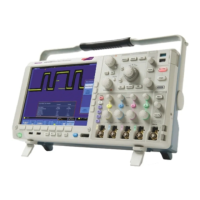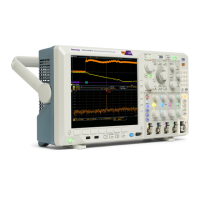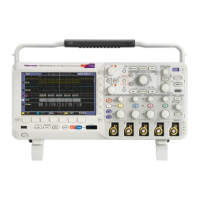Specifications
P6616 Digital
Probe Specifications
The following table shows the P6616 Digital Probe specifications.
Table 6: P6616 digital probe specifications
Characteristic Description
Number of channels
16 digital inputs
Input resistance, typical
100 k to ground
Input capacitance, typical 3.0 pF
Measured at the podlet input. Requires the use of 342-1140-00 ground clip on each
channel
Minimum input signal swing, typical 400 mV
p-p
Requires the use of 342-1140-00 ground clip on each channel
Maximum input signal swing, typical
30 V
p-p
for f
in
200 MHz (centered around the DC threshold voltage) at the P6616
probe tip.
10 V
p-p
for f
in
>200 MHz (centered around the DC threshold voltage) at the P6616
probe tip.
Failure to meet this input signal requirement will compromise the AC performance of the
digital channel. It might also damage the input circuitry. See the A bsolute maximum
input voltage specification.
Maximum Input Toggle Rate 500 MHz
Maximum frequency sine wave input (at the minimum signal swing amplitude) that can
accurately be reproduced as a logic square wave.
Requires the use of a 342-1140-00 ground clip on each channel.
Higher toggle rates can be achieved with higher amplitudes.
Absolute maximum input, typical
±42 V peak at the P6616 input (not at the instrument input)
Probe input voltages beyond this limit could permanently damage the instrument and
the P6616 probe.
Channel-to-channel skew, typical
200 ps
Digital channel to digital channel only.
This is the p ropagation path skew and ignores skew contributions due to threshold
inaccuracies (see Threshold accuracy) and sample binning (see Digital channel timing
resolution). Factory calibration/deskew is required to achieve this number.
MSO4000B and DPO4000B Series Specifications and Performance Verification 19

